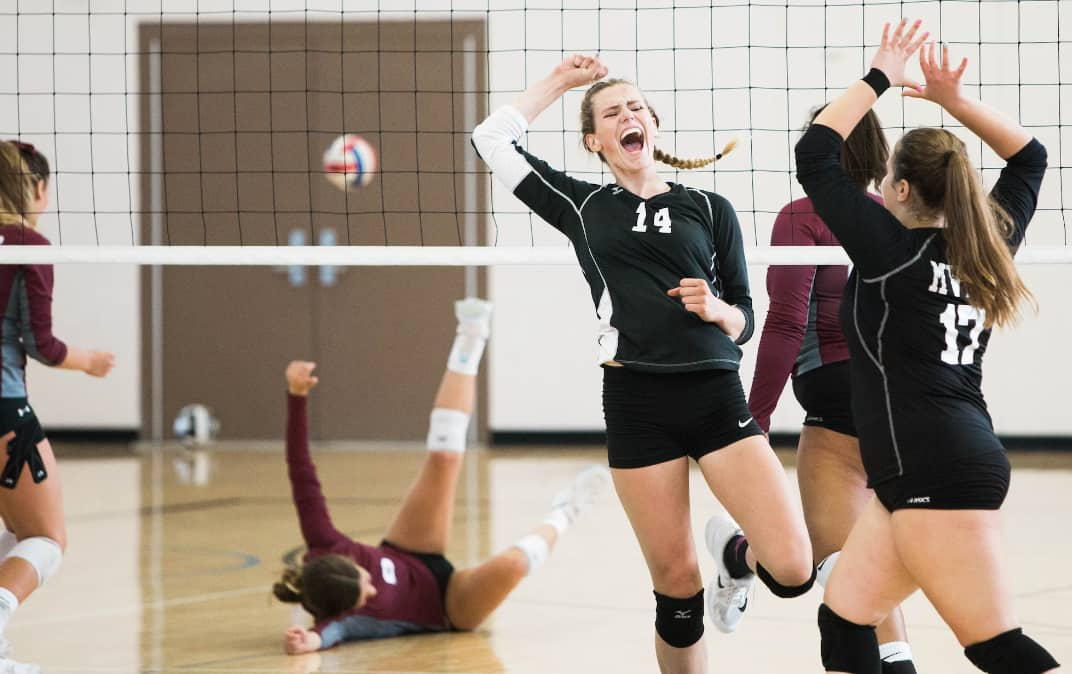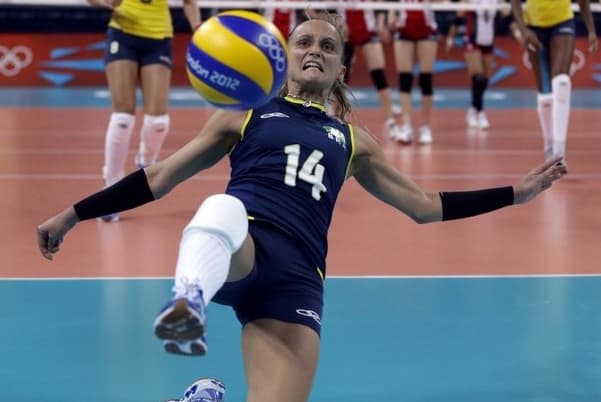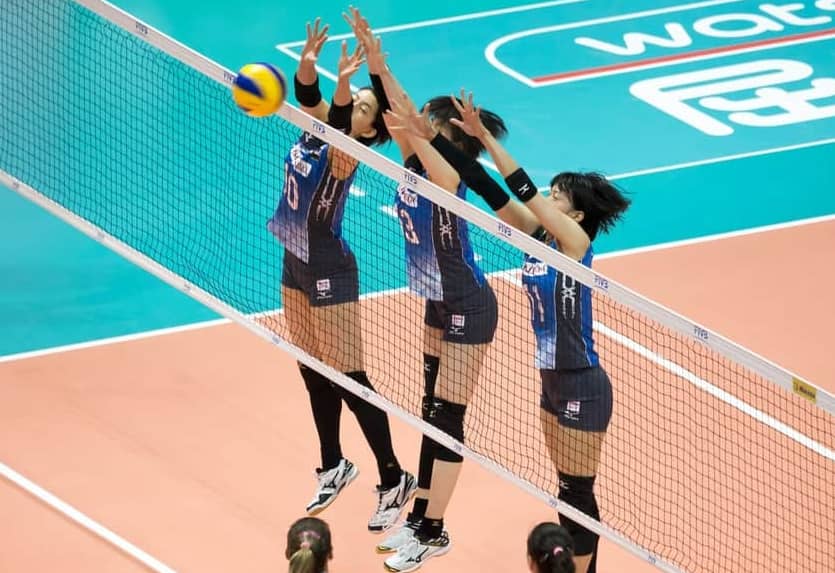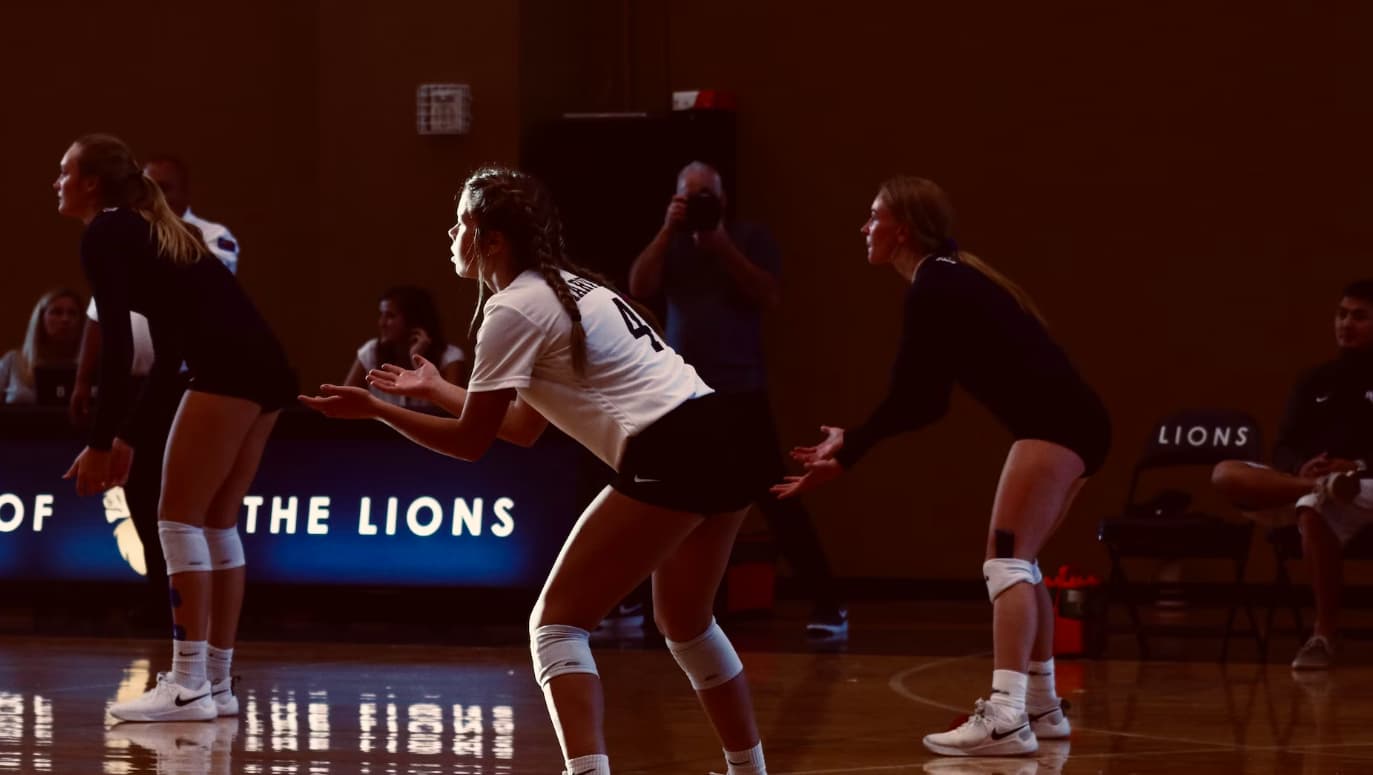How Long Do Volleyball Games Last – Understanding the length of volleyball games might be a little complex because there are a lot of parts that change the score and how to win, unlike in soccer or basketball where there are fixed time rules.
But, this doesn’t make it boring! Actually, it makes watching volleyball more fun and thrilling because the game can turn around at any moment if the team decides to push through.
But let’s get to the point…
How Long Do Volleyball Games Last?

So, how much time does a volleyball game take? Usually, a game of volleyball goes on for 60 to 90 minutes, but it changes based on how many sets are played.
If they’re playing best out of three sets, it might be around an hour, but if it’s best out of five, it might even reach close to two hours.
Now, beach volleyball is a bit different and on average is about 45 minutes long per match.
These times are just general ideas because we expect each set to be about 20-25 minutes.
Though this is common, the length of a set can change a lot, being either shorter or longer, even in the same game.
So, when you’re planning to either book or watch a volleyball game, it’s smart to allow more time than you think you might need. Volleyball players are known for surprising us, after all.
In this piece, we will talk about:
- Factors that affect time in volleyball
- High school vs college match lengths
- Some frequently asked questions
3 Factors That Make A Volleyball Game Longer or Shorter
-
#1: Number of Sets
The main thing that decides how long a volleyball game will last is the number of sets that are played.
The fewer sets that are played, the less time teams will be on the court. Winning sets in a quick manner can also affect how a team does in future matches or tournaments.
When it’s a best-of-three-sets game – which is common in middle and high schools – a team has to win two out of three sets to win the match.
Assuming each set takes about 20 to 25 minutes, the quickest match could end in roughly 40 minutes. If there’s a tiebreaker set, the game could get close to an hour, and if it’s a best of five sets, it will be even longer.
But there’s more.
A team can only win a set in volleyball if they have at least a two-point lead, and sometimes, especially in a really close match, the points can go above the usual 25 points needed to win. This creates exciting competition and intense moments but also makes the game last longer.
Interestingly, back in 1979, there was a set that went all the way to 87-85 before it ended. That was because, under the old rules, teams could only score a point while serving. These rules were eventually changed to prevent super-long sets like that from happening again.
In summary, the number of sets in a volleyball game can be quite unpredictable, and even the time it takes to play individual sets can vary a lot. That’s why, when you’re planning to attend or schedule a volleyball event, it’s a good idea to allow more time than you think you might need!
-
#2: Timestops
Pauses in the game, or ‘timestops,’ are another thing that can make a volleyball game longer. As the name suggests, during a timestop, the game is paused or put on hold. This can happen for timeouts, substitutions, emergency stops for injuries, and breaks.
Even though timestops are usually pretty short, they can all add together to make the game longer.
Every team gets two timeouts and can substitute players six times during each set. A smart coach might use these moments to pause the game, talk with their team, and figure out how to come back and win or keep their lead, which adds a few more minutes to the set.
In professional games, there are also what’s called technical timeouts.
These happen automatically the first time a team scores the 8th and 16th points in a set – except for the last tiebreaker set. They only last 30 seconds, so they’re more like a quick breather for players than a real pause in the game.
Emergency timeouts and breaks are a different story.
They can be as short as five minutes as long as five hours, or sometimes even longer. Different things can cause them, like a player getting hurt, a fire in the venue, or bad weather.
While we hope these things don’t happen, they can and do, and they can make a game last much longer.
-
#3: Beach vs Indoor
We’ve chatted about how the number of sets can change the length of a volleyball match, especially in indoor volleyball where games are either best of three or five sets.
In beach volleyball, though, it’s always best of three sets. Plus sets go up to 21 points instead of 25, with the last tiebreak set going up to 15 like usual.
Playing beach volleyball is super tiring because running and jumping in the sand takes a lot of energy.
Having the best of five matches with only two players on each team would be really hard and not much fun. So, the sets are made a bit shorter and limited to three to keep things exciting and enjoyable for everyone watching.
How Long Is A High School Volleyball Game?
A high school volleyball game usually takes about an hour. But, varsity matches, which are a bit more advanced, can go on for a bit longer, sometimes up to an hour and a half.
Why are there differences in how long the games last? Mainly, it comes down to the differences between JV (Junior Varsity) and varsity teams.
JV teams, which might also be called freshman teams, usually play a best of three sets, while varsity teams usually play a best of five sets. Because varsity players often have a higher skill level and can keep the ball in play for longer, their matches tend to last longer.
How Long Is A College Volleyball Game?
A volleyball game at the college or university level usually takes about an hour and a half. Some matches might be over in just an hour, but when the competition is fierce, it can go up to two hours.
College volleyball is special because there’s a wide range of skill levels among the players.
Some players on college teams might be new to the sport, while others could be national-level competitors with attack and defense skills like professional players. This big mix of abilities means that match lengths at this level can be really unpredictable, depending both on the division and individual skills.
This level of unpredictability makes college volleyball one of the most fun and exciting to watch.
What’s more, for many of these student-athletes, this might be their last season playing volleyball. That brings a lot of passion and energy to their teams, which you might not see as much in other levels of play.
Whenever you can, go support your local college team and enjoy some great volleyball while you’re there.
How Long Is A Beach Volleyball Game?
Beach volleyball games usually take about 45 minutes. This is shorter than indoor volleyball because teams need fewer points to win and they play best of three sets.
Indoor volleyball teams often play two or three matches in a single tournament day, but beach players can sometimes play up to five or even six games a day. However, in more advanced tournaments, they play fewer games.
Beach volleyball is quick and thrilling. If you’re looking for a fun way to spend an afternoon and get some sunshine, consider watching or playing in a local beach volleyball tournament. Seeing it live is always more exciting.
How Long Do Volleyball Tournaments Last?
Volleyball tournaments generally fall into two categories: endurance-based and progression-based.
Endurance tournaments usually happen over a single weekend, with teams playing 2-4 matches each day. These tournaments can last 10 or 12 hours a day, with shorter hours on the second day as teams are eliminated.
On the other side, progression tournaments spread out over several weeks or even months. Teams usually play one (or occasionally two) matches on a set day, traveling to compete against their opponents instead of meeting at a single venue. Once they reach the quarter- or semi-finals, the teams converge at one location for an 8-hour day of competition.
Each tournament type has its merits, but progression-style tournaments need more planning and time overall. Thus, they’re often reserved for professional and university levels, while endurance tournaments are more common for high school and club levels.
Quick Summary:
- Progression tournament: 4-5 individual matches + one 8-hour day at a venue.
- Endurance tournament: a weekend of 10-12 hours each day.



